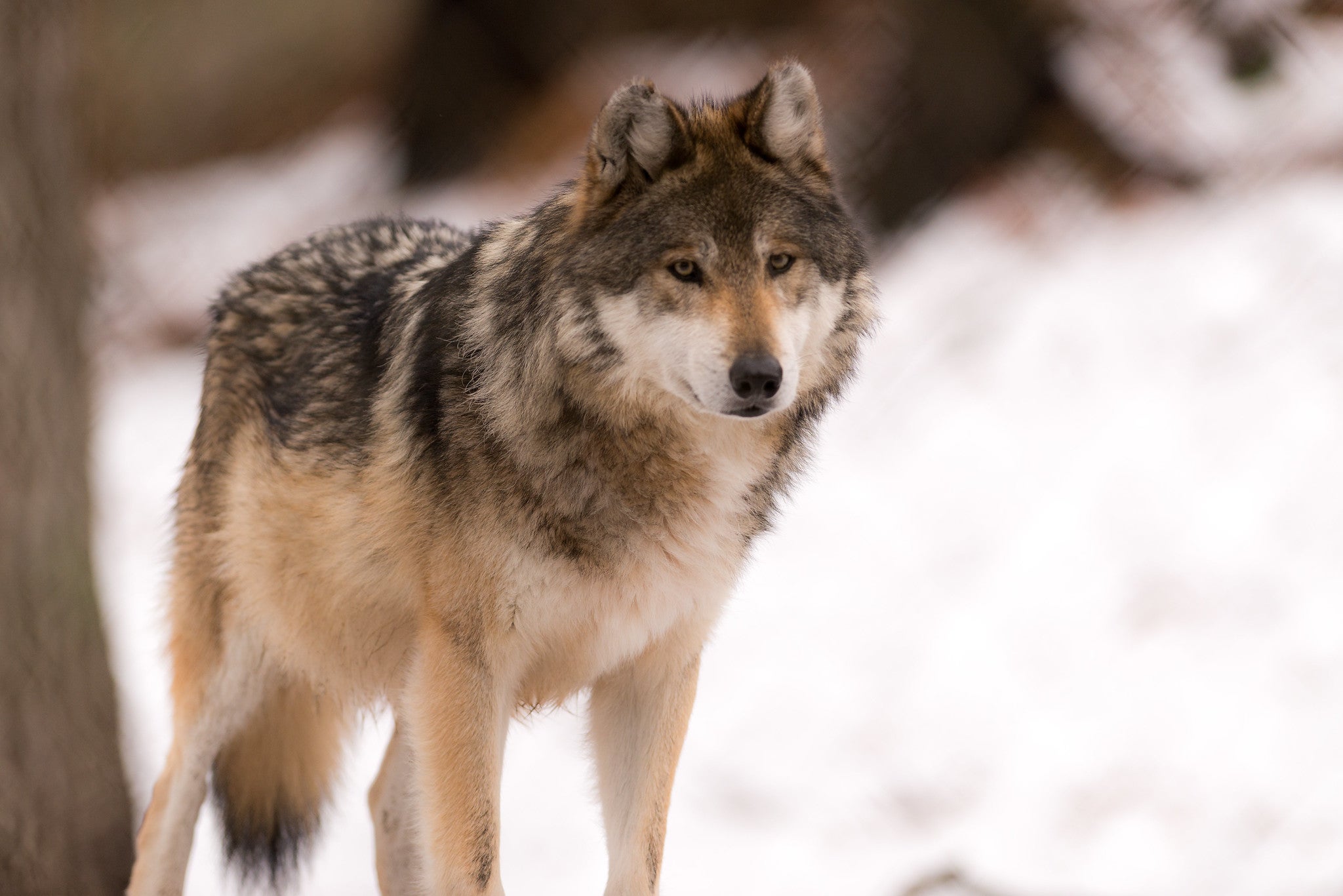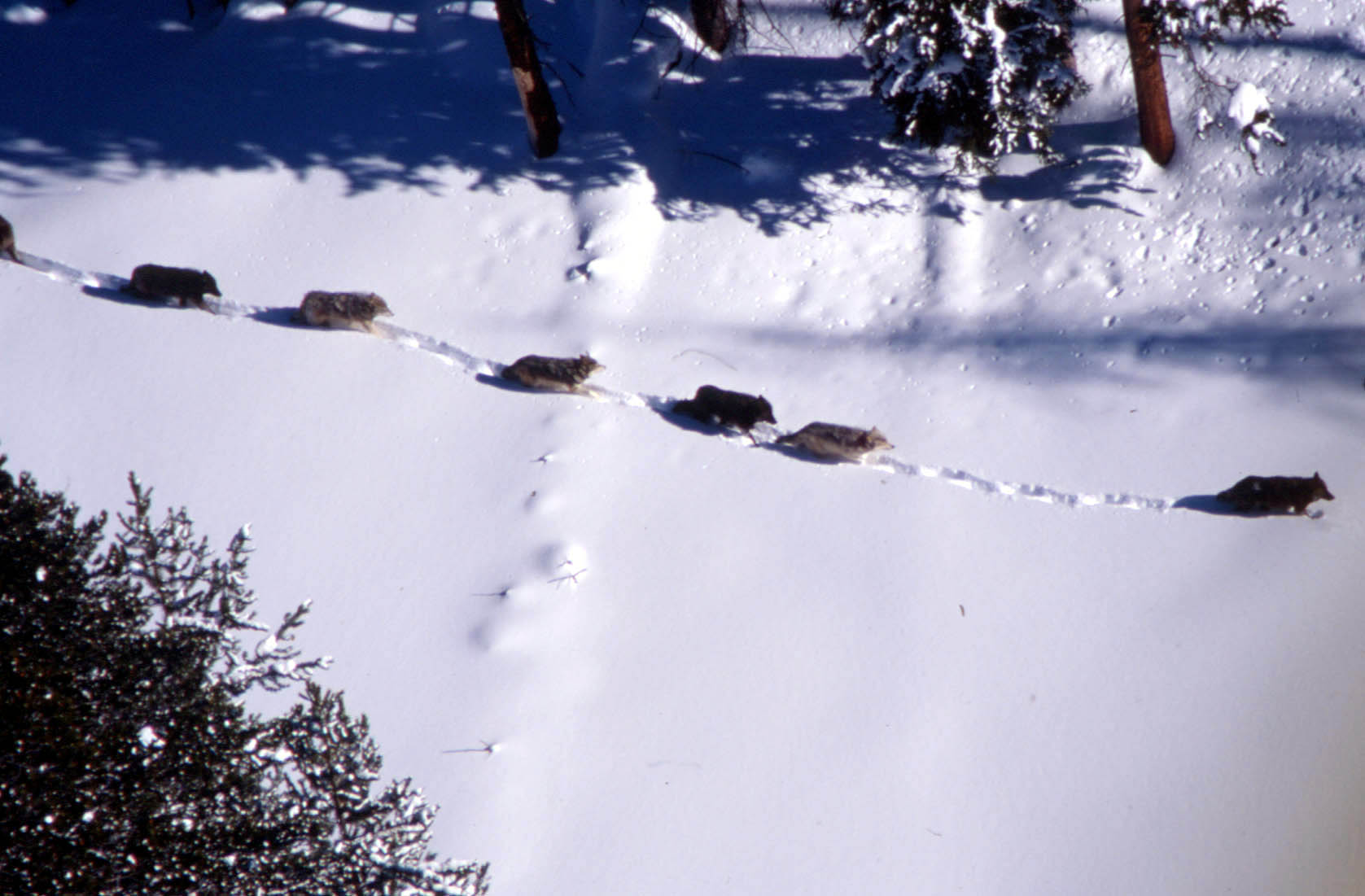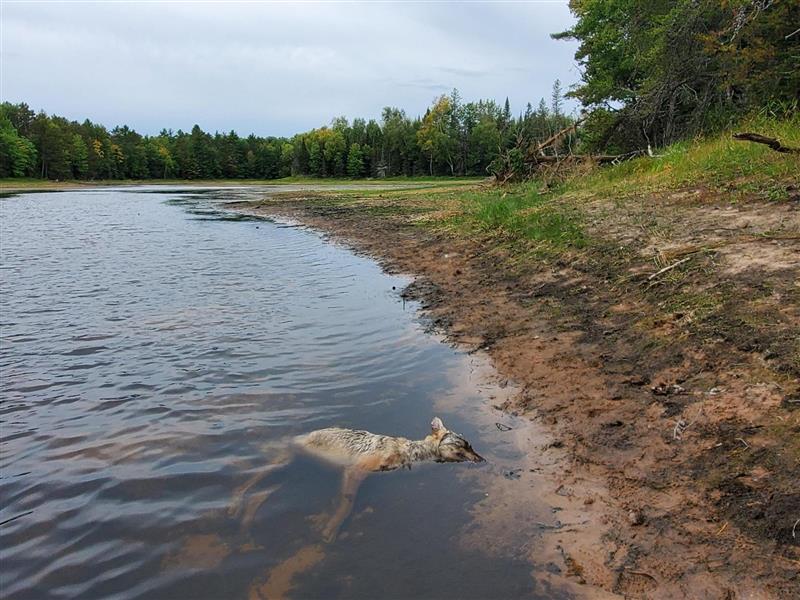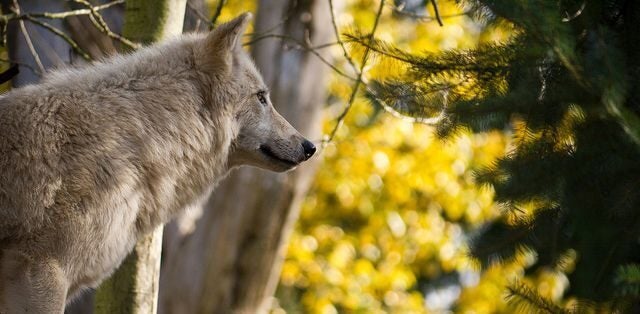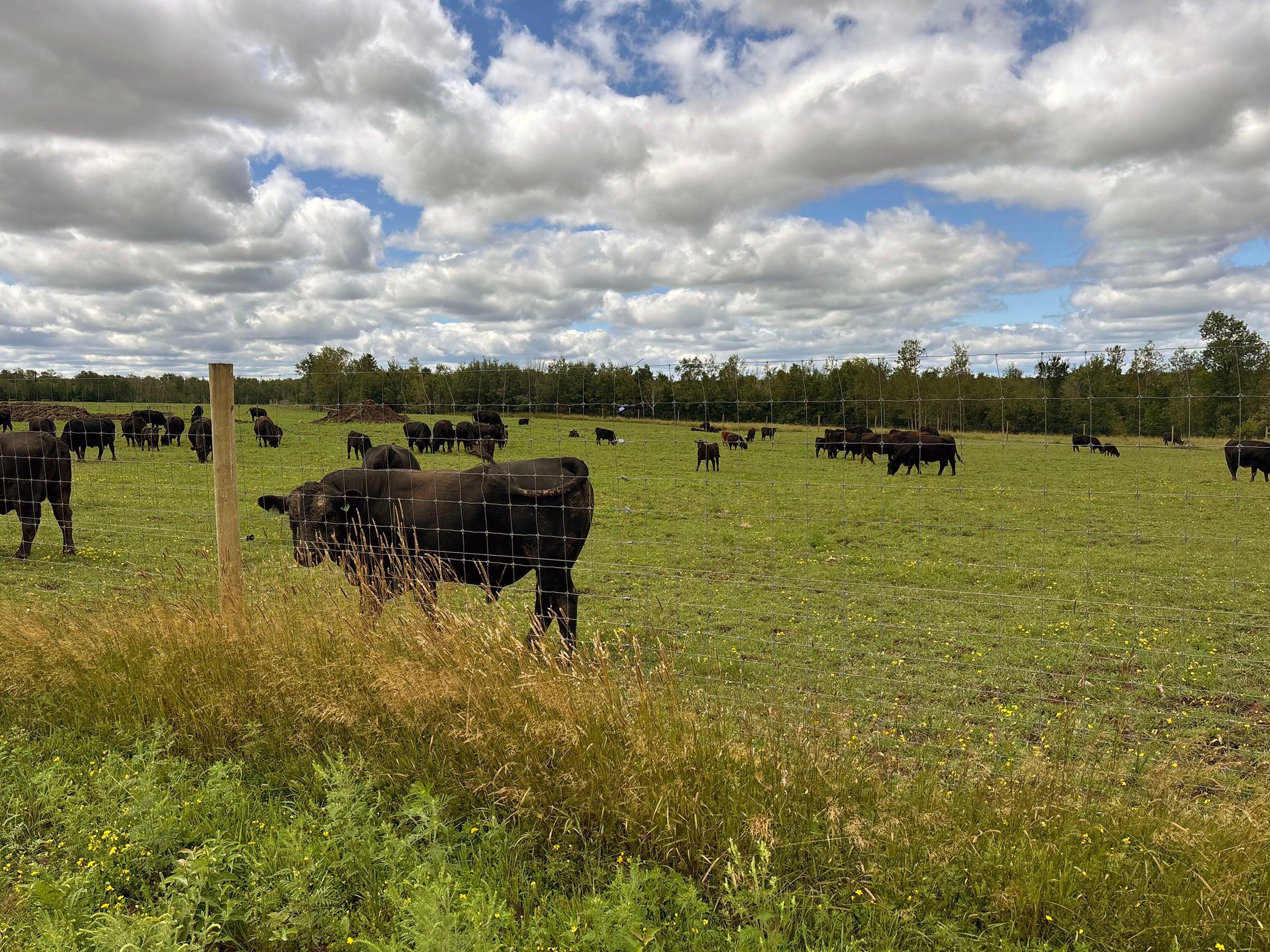Researchers at the University of Wisconsin-Madison say a second wolf hunt last year would have risked Wisconsin’s wolf population dropping to undesirable levels that include the wolf possibly becoming endangered or extinct in Wisconsin.
The study published in the scientific journal PLOS One found it’s more likely than not that a well-regulated hunt would have required placing wolves on the state threatened and endangered species list. Researchers concluded a repeat of the February wolf hunt, during which hunters killed 218 wolves in less than three days, risked extirpation of wolves statewide except on tribal reservations.
A Dane County judge placed Wisconsin’s second wolf hunt on hold last fall, and a federal judge restored protections for wolves in February. Even so, the study examined several potential outcomes that could have resulted from a second season.
Stay informed on the latest news
Sign up for WPR’s email newsletter.
Those outcomes were based on quotas proposed by the Natural Resources Board, Wisconsin Department of Natural Resources and no harvest last fall. The board had approved a harvest of 300 wolves while the DNR set a quota of 130 wolves.
Adrian Treves, professor of environmental studies at UW-Madison, said his lab found any wolf hunt last fall risked Wisconsin’s wolf population dropping below the state’s management goal of 350 wolves.
“What we tried to show in this paper is that if you take into account the science, then a quota of more than 16 actually really creates some risk,” Treves said. “And the DNR was not transparent about that risk, if they were even aware of it.”
Treves and and fellow researcher Naomi Luochouarn used two methods the DNR has relied on for developing wolf population estimates and built a model to predict outcomes of those harvest scenarios. The study’s modeling found a harvest between 16 and 88 wolves last fall would likely have caused the population to fall below 350 wolves.
Researchers also found a more than 50 percent chance the wolf population would have dropped below the state’s endangered species listing threshold of 250 wolves if hunters had killed between 113 and 189 wolves. And the study found no hunt at all posed a 13 percent chance of the population falling below the state’s management goal.
The Wisconsin DNR declined to comment on the study’s findings.[[{“fid”:”1451191″,”view_mode”:”full_width”,”fields”:{“alt”:”gray wolf”,”title”:”gray wolf”,”class”:”media-element file-embed-landscape media-wysiwyg-align-right”,”data-delta”:”1″,”format”:”full_width”,”alignment”:””,”field_image_caption[und][0][value]”:”%3Cp%3EThis%20July%2016%2C%202004%2C%20file%20photo%2C%20shows%20a%20gray%20wolf%20at%20the%20Wildlife%20Science%20Center%20in%20Forest%20Lake%2C%20Minn.%20%3Cem%3EDawn%20Villella%2FAP%20Photo%3C%2Fem%3E%3C%2Fp%3E%0A”,”field_image_caption[und][0][format]”:”full_html”,”field_file_image_alt_text[und][0][value]”:”gray wolf”,”field_file_image_title_text[und][0][value]”:”gray wolf”},”type”:”media”,”field_deltas”:{“1”:{“alt”:”gray wolf”,”title”:”gray wolf”,”class”:”media-element file-embed-landscape media-wysiwyg-align-right”,”data-delta”:”1″,”format”:”full_width”,”alignment”:””,”field_image_caption[und][0][value]”:”%3Cp%3EThis%20July%2016%2C%202004%2C%20file%20photo%2C%20shows%20a%20gray%20wolf%20at%20the%20Wildlife%20Science%20Center%20in%20Forest%20Lake%2C%20Minn.%20%3Cem%3EDawn%20Villella%2FAP%20Photo%3C%2Fem%3E%3C%2Fp%3E%0A”,”field_image_caption[und][0][format]”:”full_html”,”field_file_image_alt_text[und][0][value]”:”gray wolf”,”field_file_image_title_text[und][0][value]”:”gray wolf”}},”link_text”:false,”attributes”:{“alt”:”gray wolf”,”title”:”gray wolf”,”class”:”media-element file-full-width”,”data-delta”:”1″}}]]
Treves argued the state should have been more cautious about a fall wolf hunt due to uncertainty with the state’s population following last year’s February wolf hunt. He said that combined with uncertainty about whether wolves were able to successfully reproduce made it difficult to determine what effects a second hunt would have on the wolf population.
Treves added the state’s current occupancy model for gauging the wolf population hasn’t been published or peer-reviewed by scientists, and he argued the agency is underestimating wolf mortality.
He highlighted the DNR estimated 13 percent of wolves die from non-harvest human-caused factors as part of developing a quota last fall. Treves said that estimate was unscientific and appears to rely on reported wolf deaths, which excludes wolves that die and aren’t found. He said their study estimates 38 to 56 percent percent of wolves die on average each year, and that includes wolves killed by hunters, disease and illegal killing.
“I think our goal is always to improve the science that informs the management of the science-based management,” said Louchouarn, a doctoral candidate at UW-Madison’s Nelson Institute for Environmental Studies. “But, if the management that is claiming to be science-based is not, then no matter how good our science is, it’s not going to really be successful in improving the management.”
However, some researchers question the study’s assumptions, including Adrian Wydeven, a former state wolf biologist who now co-chairs the wildlife working group for conservation organization Wisconsin’s Green Fire.
Wydeven said the study’s findings are highly unlikely. He said the study assumes an unreasonably high estimate of wolf mortality.
“At that level, the population would never have been able to grow to the extent that it currently is,” Wydeven said. “So it’s a really artificially high level of mortality that he’s using in his modeling.”
DNR data shows Wisconsin’s wolf population has more than quadrupled over the last two decades to roughly 1,100 wolves last year prior to the February wolf hunt. Research by Wydeven and DNR scientists has found around 24 percent of wolves die each year due to illegal killing, natural causes and human-caused mortality like vehicle collisions and hunting.
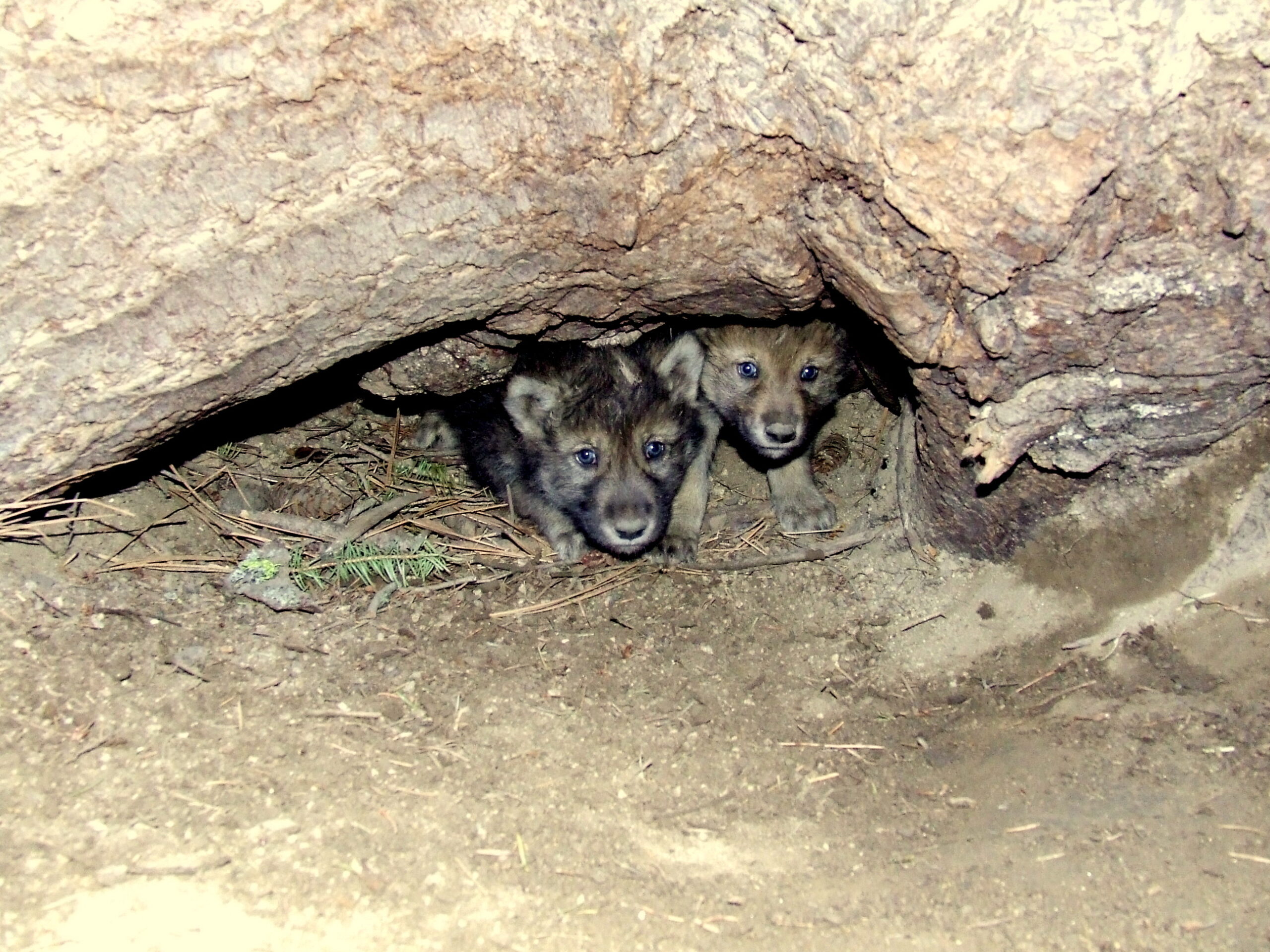
Wydeven also said the study assumes only 20 percent of wolf pups survive from summer until fall, which he said was based on a study that incorrectly reported pup survival from wolf breeding. He said that combined with the study’s higher estimated mortality rate creates “an extremely low number that’s not very realistic.”
He also noted the state’s occupancy model for gauging the wolf population was published in a peer-reviewed journal last year, which shows the DNR’s method for estimating the wolf population is valid. But Treves argued that article doesn’t provide raw data to show how the model turns that into a population estimate.
Erik Olson, associate professor of natural resources at Northland College, said the study makes assumptions that could be challenged or debated. He said researchers acknowledge they’re introducing bias with a higher estimate of wolf deaths that are unrelated to the wolf hunt, which they say offsets bias that dismisses unreported deaths and excess illegal killing.
“This represents one potential range of outcomes, but it doesn’t represent the full range, or potentially even the most accurate range, of potential outcomes from such quotas,” Olson said.
Even so, Olson agreed with the study’s conclusion that the DNR needed to take precautions in setting a quota last fall.
“They were put in a tricky spot to determine a quota,” he said. “The process of identifying that quota should include a wider range of potential outcomes because of the greater uncertainty we have with how the wolf population would respond to a wolf hunt such as we had in last February.”
The state held three wolf hunts in 2012, 2013 and 2014 when that animal wasn’t under federal protection. Hunters harvested 117, 257 and 154 wolves during those respective seasons. Wydeven said those hunts demonstrate some harvest can be allowed without causing a drastic decline in the population, especially if hunts are held during the fall wolf season.
Treves countered that is not a fair comparison since the February wolf hunt occurred during the wolf’s breeding season and likely led to fewer pups being born from females that were killed.
Wydeven and Olson both say the true test will be comparing the study’s findings to the DNR’s population estimates for this past winter, which are expected to be released in the coming weeks.
Wisconsin Public Radio, © Copyright 2025, Board of Regents of the University of Wisconsin System and Wisconsin Educational Communications Board.
